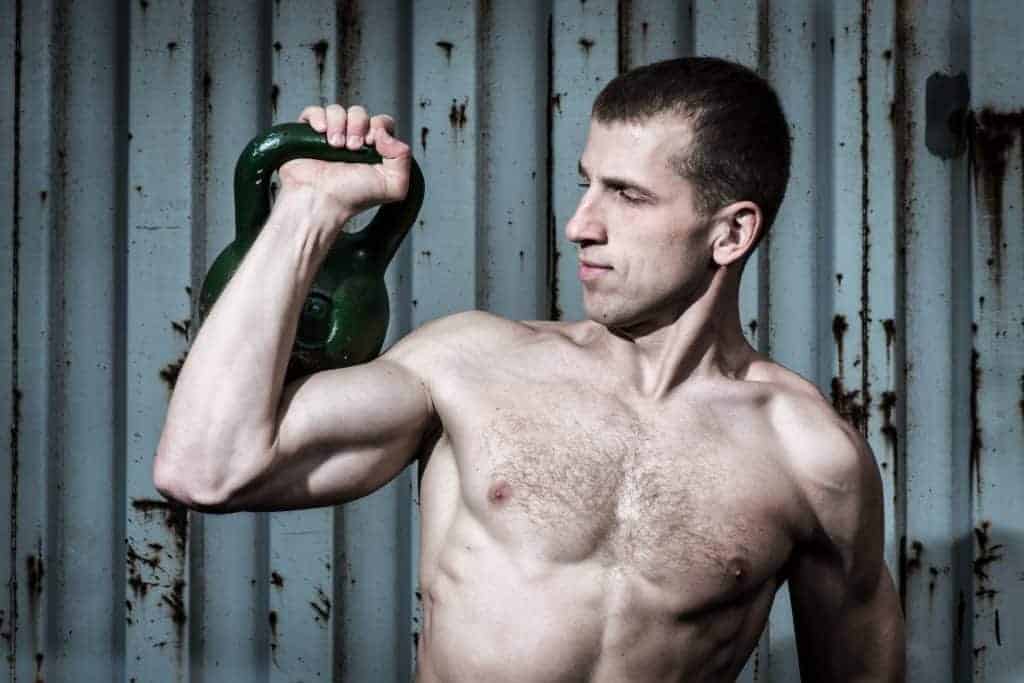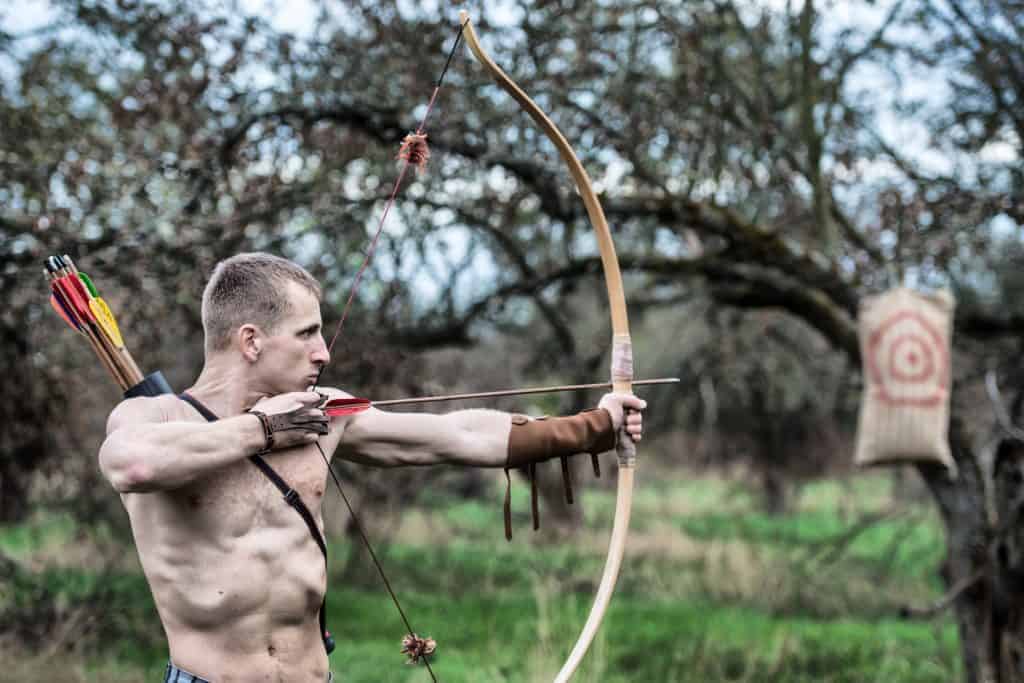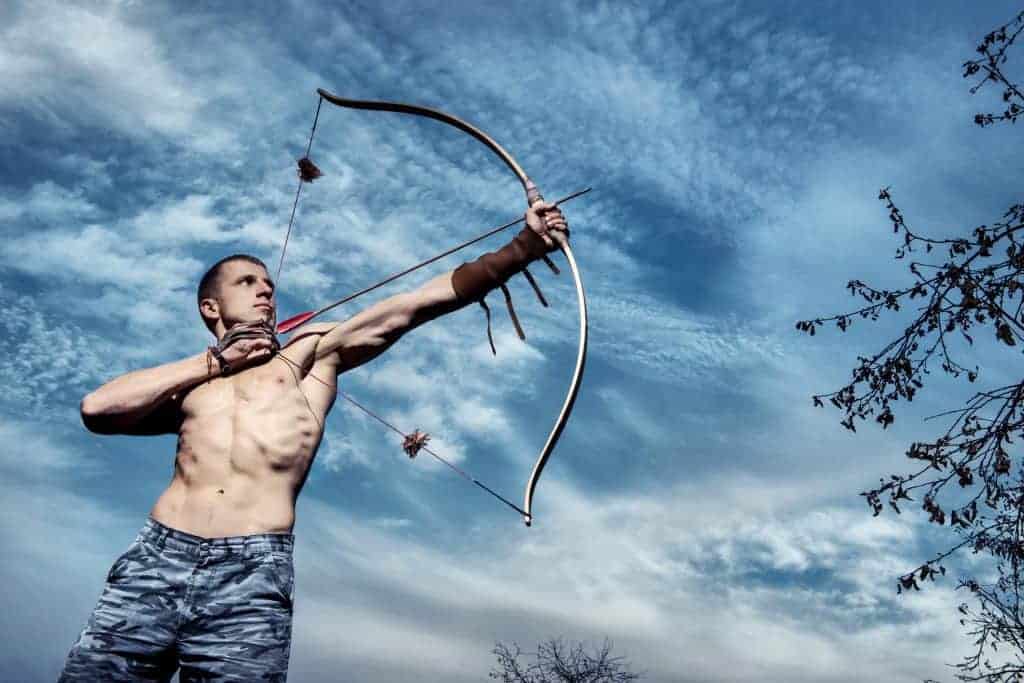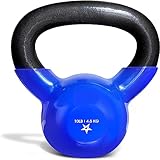This article is evidence-based and verified by Blake Conner, Certified Strength, and Conditioning Specialist .
.
A more recent tool for increasing your strength, power, and speed has come onto the scene. It’s been around for a couple of years but has become a mainstay in most gyms—the kettlebell.
The kettlebell is a weighted ball that has a handle on it. Depending on the brand, they can be made from steel, iron, or even concrete.
They are versatile equipment that can be used for many different movements and forms of exercise.
The kettlebell has been popular with the CrossFit community but has been seen in other gyms and fitness pursuits. We tip our hats to Pavel Tsatsouline.
The kettlebell can come in a variety of weights, from 5 pounds to 200 pounds. This makes the kettlebell a very versatile piece of equipment. You can squat it, swing it, press it, or carry it. All of which produce an exciting and powerful stimulus on the body.
Now, are kettlebells useful for improving your skills of archery and bowhunting?
The short answer is – YES.
Kettlebells are fantastic for building, strength, speed, and power. They are also great for improving your fitness levels and reducing injury. All of which prove useful for archery and bowhunting.

- Kettlebell supports a wide range of resistance training exercises
- Includes a 35 pound kettlebell made of solid cast iron for built-to-last strength
- Textured wide handle helps ensure a comfortable, secure grip; hold with one hand or two

- HIGH-QUALITY CAST IRON CONSTRUCTION: Built to last of solid cast iron with no welds, weak spots, or seams. Great for training indoor & outdoor
- DURABLE VINYL COATED FINISH: Encased with vinyl to prevent corrosion, increase durability, reduce noise, protect flooring & enhance appearance
- WIDE, SMOOTH HANDLE: Smooth, high-quality slightly textured handle provides a comfortable & secure grip for high reps, makes chalk no longer necessary

- 15 pound kettlebell weight for exercise and strength training
- Solid cast iron with Pink vinyl coating that protects floors, reduces noise, and prevents corrosion
- Flat base for stay-in-place storage; weight clearly printed on both sides
Last update on 2025-04-06 / Affiliate links / Images from Amazon Product Advertising API
In this post, we'll cover:
Can you get strong with just kettlebells?

Kettlebells are great for getting strong. However, some have the idea that you cannot get strong with just kettlebells alone. It is theorized that kettlebells will not produce a strong enough stimulus to make you gain strength.
Not true! Especially now that there are kettlebells of increasing weight, a lot more can be done.
As an archer or a bowhunter, you just need general strength. You don’t need to back squat 450 pounds or bench press 315 pounds. You just need to be strong enough for your desired outdoor sport. This can be accomplished by only using kettlebells!
Now, there does need to be some sort of programming or progression going on if you hope to continue getting stronger. The body will adapt if you are doing the same thing every day.
Thus, leading to a plateau in strength being built. Initially, just start out using basic movements and lighter weight. From there, you can try more advanced techniques or increase weight. This will be enough to drive that adaptation in the right direction.
There are multiple ways in which you can gain strength using kettlebells as well. You can approach it from a general standpoint and perform the basic compound lifts.
This would include some squatting, swinging, and pressing. Within that, you can vary the weight, the reps, the speed, and the intensity of how you move. All of which will go into how it changes your body from a strength and power perspective.
The cool thing about kettlebells is that a lot of creativity can go into them when looking to drive that increase in strength for your sport.

- Amazon Kindle Edition
- Tsatsouline, Pavel (Author)
- English (Publication Language)
Last update on 2025-04-18 / Affiliate links / Images from Amazon Product Advertising API
Are kettlebells good for cardio?
Kettlebells can be used for cardio. First, we need to define what cardio even is.
In simple terms, you are increasing your heart rate for a prolonged time. We can do this by walking, running, biking, or even moving. It forces the heart to pump more blood and bring in more oxygen; thus, why you start to breathe heavily after some time.
If we take kettlebells and apply this strategy, let’s say doing a kettlebell swing can be great cardio. As you perform the exercise, there are parts of it that don’t require that cardio component. However, after prolonged use, you begin to tap into that.
Five kettlebell swings won’t be much cardio, but forty in a row? Maybe. It all depends on how long and intensely you are swinging the kettlebell.
In a study, kettlebell movements were pitted against higher intensity walking to see which would benefit aerobic fitness more. The two came out with the same result. Meaning that kettlebells can be useful for cardio (3).
It is advised that if you decide to use the kettlebell for cardio, you use a lighter weight. This way, you do not exhaust yourself by performing the movements wrong. You wouldn’t want to run a mile with added weight; it’s not safe. Think the same way about a cardio-based kettlebell workout.
Shoulder exercises for archery

When looking to improve your archery skills, you must have stability and strength, especially in the shoulder. Both of these can be acquired through strength training. Even better, they can be achieved through kettlebell workouts.
In this study, a kettlebell program was used for the elderly to reverse some sarcopenia. This 8-week program was successful, and some benefit was even seen up to 4-weeks after the program had ended. This goes to show that kettlebells can be effectively used to improve strength and stability.
Kettlebells can hit not only the big muscles in the shoulder but the smaller ones.
This is how you create strength and stability. Just to define them, strength is your ability to move a certain amount of weight from point A to point B. It depends on how strong your muscle fibers are as to how much you can lift or move.
Within that, you have the stability of the muscle. This simply means that things stay as they should as you move. If your shoulder were not stable in the socket, you would injure other tissues.
These are both important when looking to be good at archery. The shoulder joint and arm must be strong enough to draw the bow back. Your shoulder must also be stable enough to hold its own in that position.
As you can see in the picture below, this joint has numerous muscles, tendons, and bones. So, stability is going to be necessary.


With kettlebells, THREE main exercises are going to dial in strength and stability for archery:
The kettlebell farmers carry
With this movement, you are going to have the kettlebell at your side. From here, you are going to pull your shoulder blades backward, just as if you were trying to pinch a pencil between your shoulder blades.
Keep your rib cage pulled “down” towards your hips so that you are standing completely erect. Now, you just walk for a certain distance. The kettlebell will try to pull your torso to one side, but you have to fight to stay level.
This works your entire body’s stability and strength, as well as keeping the shoulder in one spot. Thus, making it perfect for archery.
Check out the video below for different variations on the kettlebell farmers carry.
The kettlebell bent-over row
This movement will work your strength when pulling back the bow, but also the stability of your shoulders. All you have to do is find something to prop yourself up against. Take one arm and place it on the bench or implement that you are using to prop yourself up.
Whatever hand you have up, move the opposite leg back. Make sure there is a slight bend in your front and back knee, reach for the kettlebell, and lift it from the ground. You need to pull that shoulder blade back to get stable.
Then imagine pulling from the elbow until the kettlebell is right at your hip. Slowly lower the weight back to the starting position. This movement is very similar to a drawing of the bow.
The upside-down/bottoms-up kettlebell press
This will work all of the tiny muscles in the shoulder and drastically increase your stability. Take a light kettlebell and hold the handle. You are going to flip the kettlebell upside-down so that the bottom is facing the ceiling.
To maintain this position, you will press vertically until your arm is completely locked out. Slowly lower the weight back to the starting position and repeat.
Having to control the weight like this forces the tiny muscle in the shoulder to turn on and get worked. Thus, increasing the stability and strength of the joint for archery.
Using these movements, you can build a very healthy and robust shoulder that can be used when practicing archery. Injury prevention is essential, and the shoulders are one of the most injured areas of the body. Practicing these allows you to remain injury-free, secure, and stable when doing archery.
Kettlebell-only strength and conditioning workout
When using kettlebells, you are going to want some sort of structure to your workouts. Sure, having fun is essential, but making those gains in strength needs structure.
What is nice about kettlebells is that you can put together something that works not only for strength but conditioning as well. Being healthy and in shape is essential.
Here is an excellent outdoor strength and conditioning workout that is kettlebells only.
Kettlebell-only workout, 7 Rounds of the following:
- Kettlebell Goblet Squat x 8 reps
- Russian Kettlebell Swing x 8 reps
- 200m Run
- Kettlebell Push-Press x 8 reps
- Kettlebell Deadlift x 8 reps
You may see this ubiquitous structure with a strength and conditioning workout primarily using kettlebells. What is perfect about this workout is that it hits every part of the body.
The reps are also high enough to get the heart rate up but also allow for some weight to be used. The run is in there as a form of cardio and a set of rest between the kettlebell movements.
If you are training for archery, a workout like this will set you up well for better performance.
Closing

Kettlebells can be extremely useful. They don’t require much space, and you can even travel with them. They come in various weights, which makes progression with these exercises very simple.
Kettlebells can help with gaining strength, power, and even some conditioning. When used right, you can get strong by just using kettlebells.
When it comes to archery and bowhunting, kettlebells are an excellent tool for improvement. They not only build strength but also build stability in the right places. More specifically, they can build stability in the shoulder joints, which are very important for drawing a bow.
We’ve reviewed different recurve bows based on their value at different pricing categories, and you can also read about their different draw weights by clicking here .
.
For the most part, you can find them at any gym now, or you can even purchase your own. They are great to have around for any type of exercise or training.

- Kettlebell supports a wide range of resistance training exercises
- Includes a 35 pound kettlebell made of solid cast iron for built-to-last strength
- Textured wide handle helps ensure a comfortable, secure grip; hold with one hand or two

- HIGH-QUALITY CAST IRON CONSTRUCTION: Built to last of solid cast iron with no welds, weak spots, or seams. Great for training indoor & outdoor
- DURABLE VINYL COATED FINISH: Encased with vinyl to prevent corrosion, increase durability, reduce noise, protect flooring & enhance appearance
- WIDE, SMOOTH HANDLE: Smooth, high-quality slightly textured handle provides a comfortable & secure grip for high reps, makes chalk no longer necessary

- 15 pound kettlebell weight for exercise and strength training
- Solid cast iron with Pink vinyl coating that protects floors, reduces noise, and prevents corrosion
- Flat base for stay-in-place storage; weight clearly printed on both sides
Last update on 2025-04-06 / Affiliate links / Images from Amazon Product Advertising API
Kettlebell FAQs
How many days a week should you do kettlebells?
Kettlebells can be used multiple days a week. However, the frequency should be based on how intense your workouts are. If they are reasonably simple and not intense, you could do them multiple times a week. They could be a little more spread out if they are a little more on the wild side.
You also need to take into consideration your recovery. If you are really on top of your recovery (sleep and nutrition), you should be fine to have more frequent workouts. However, you may run into issues or overtraining syndrome if you don’t take it that seriously.
Do you need two kettlebells?
No, one kettlebell will suffice. If you are new to kettlebells, you should start with just one. As you progress into more advanced territory, you can begin to implement two.
Two kettlebells are a great way to increase the weight and stimulus being put on the body.
Are kettlebells bad for your back?
Kettlebells can only be bad for your back if you are doing the movements incorrectly. So, it is advised that you have been shown how to handle one and the mechanics behind it correctly.
Other than that, they are perfectly safe.
Will kettlebells make me bulky?
No, kettlebells will not make you bulky. Unless you are eating in a way that supports that type of muscle growth, you will not see this. This will especially not happen in women. Women do not possess the proper amounts of testosterone to produce enough muscle to be bulky.
If you want to build more muscle mass, you can do so with kettlebells.
What weight kettlebell should a beginner use?
Beginners should start with a weight that is comfortable for them. This may be as light as 3-5 pounds or as massive as 35 pounds. If you have no previous experience using kettlebells, then it is suggested that you start lighter to get the technique down.
How To Use Clubbells For Better Archery Training

Blake Conner is a nutritionist who graduated from Mississippi State University. He is also a Certified Strength and Conditioning Specialist through the NSCA and a certified nutrition coach through Precision Nutrition. Blake runs his own remote nutrition coaching business to help people become the best versions of themselves.
Sources
- https://www.ncbi.nlm.nih.gov/pubmed/22549084

- https://www.ncbi.nlm.nih.gov/pubmed/30243898

- https://www.ncbi.nlm.nih.gov/pubmed/24345977





